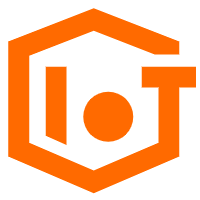In the development of IoT technology, many enterprises may face some challenges, like for IoT network. In this article, we will discuss about the challenges you may face for IoT network.
Connectivity
Connectivity is the first concerning issue, i.e., how to connect devices to the Internet and the cloud computing platform. However, to a great extent, this is determined by the device application environment and the type of communication infrastructure provided to these devices.
For example, if you need to develop a smart home device, such as an online toaster, you may access a Wi-Fi home router or a ZigBee/Z-Wave IoT router. Therefore, your device must support one or more transmission media. However, in some environments, such as the agriculture IoT or smart cars, access to the Wi-Fi network is unavailable, and the mobile network may be your only choice for connection.
Therefore, you must balance your choice and make design decisions based on possibilities provided by every option and investments. For example, it may be expensive to transmit data through a cellular network to the cloud service, but you may determine to select the function first mode or the blockchain mode to build an IoT ecosystem that is less dependent on cloud computing.
Security and Privacy
IoT security has always been a controversial issue. The first challenge to be considered is that security and privacy of IoT are fundamentally different from network security that we've known. The following lists some key points for security design that are considerable:
For more information about the challenges you may met for IoT devices, you go to Four Challenges to be Considered When Developing IoT Devices.
Leading carriers play a crucial supporting role enterprise IoT initiatives. This article addresses how carriers can improve their enterprise IoT services in four simple steps.
On the network level, carriers must transition to composite networks that support multiple communication technologies and centers on mobile network services that allow people to communicate with each other.
LTE-based networks and hybrid NB-IoT/eMTC networks can meet the requirements of IoT communication scenarios regarding wide coverage, low power consumption, low costs, and a certain degree of portability. Additionally, through sustained network construction and optimization, carriers can provide the flexible network communication support most suitable to the needs of IoT industry customers and move toward 5G. This will allow them to comprehensively cover the needs of narrowband massive-volume applications, high bandwidth applications, critical applications, and other IoT scenarios.
For enterprises, IoT simplifies businesses through automation and helps enterprises reduce costs. IoT also helps businesses efficiently collect data to explore new opportunities and increase productivity. Big data analysis, sensor networks, and dedicated applications through the network are some tools used by enterprises to maximize their profits through IoT.
IoT also has a profound impact on today's network infrastructures. However, most networks are unable to support the data flood from the massive number of IoT devices. Because of this shortcoming, these networks are unable to fully tap the potential of IoT.
Internet of Things (IoT) is enjoying high growth. More and more devices are being applied to our daily life, such as intelligent routers, various TV dongles, Tmall Genie, and robot vacuum cleaners, bringing us the convenience of intelligence. According to Gartner’s prediction, 20 billion intelligent devices will be put into service by the end of 2020, which gives a glimpse of the huge market in this field. The embedded development in traditional software field is faced with great challenges in the IoT device field. Besides the large number and wide distribution, IoT devices are difficult to debug and restricted in hardware, so traditional device log solutions cannot meet the demands perfectly.
In the IoT field, based on years of development experience in Logtail and the characteristics of IoT devices in terms of CPU, memory, disk, network, and application mode, we have developed a log data collection solution for IoT devices: C-Producer.
In many scenarios, you must process the data that is reported by devices or use the data for business applications. You can forward device data by either using the IoT Platform service subscription or the rules engine data forwarding function. This topic compares the various data forwarding solutions and application scenarios that are supported by IoT Platform to help you select a forwarding solution that best suits your needs.
Alibaba Cloud IoT Platform provides secure and reliable communication between devices and the IoT Platform which allows you to manage a large number of devices on a single IoT Platform and supports device access worldwide, from a variety of networks and providers that are all based on different protocols.
Alibaba Cloud offers robust automobile monitoring and management solutions with various algorithms, analytical models and multi-type data convergence embedded. The vehicle network architecture consists of four stages: IoT, service, big data zone and business intelligence.

2,605 posts | 747 followers
FollowAlibaba Clouder - September 24, 2019
Alibaba Clouder - August 5, 2019
Dikky Ryan Pratama - May 17, 2023
Alibaba Clouder - December 21, 2018
Alibaba Clouder - May 20, 2021
Alibaba Clouder - April 16, 2021

2,605 posts | 747 followers
Follow IoT Platform
IoT Platform
Provides secure and reliable communication between devices and the IoT Platform which allows you to manage a large number of devices on a single IoT Platform.
Learn More IoT Solution
IoT Solution
A cloud solution for smart technology providers to quickly build stable, cost-efficient, and reliable ubiquitous platforms
Learn More Global Internet Access Solution
Global Internet Access Solution
Migrate your Internet Data Center’s (IDC) Internet gateway to the cloud securely through Alibaba Cloud’s high-quality Internet bandwidth and premium Mainland China route.
Learn MoreMore Posts by Alibaba Clouder